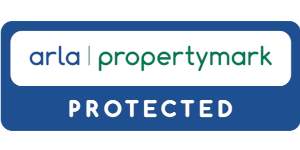Assured Shorthold Tenancies (ASTs) are the most common type of tenancy in the UK, with most landlords and property managers opting to use this agreement. In fact, most private tenants will have an AST, and the majority of new tenancies are automatically this type.
This article will discuss what an AST is, how to tell if you have an AST, landlord and tenant responsibilities surrounding this type of tenancy, and rules and regulations within ASTs.
So, what is an AST?
What is an assured shorthold tenancy (AST)?
An assured shorthold tenancy (AST) protects both tenant and landlord, with an AST agreement setting out the terms for the tenant living in the landlord’s property. An AST agreement should clearly outline the responsibilities of both the landlord and the tenant, regarding the condition of the property.
The differentiating feature between assured shorthold tenancies and other types of tenancy is that an AST means that landlords can evict tenants without giving a reason.
Is my tenancy an assured shorthold tenancy (AST)?
A tenancy will generally be considered an assured shorthold tenancy if:
- The tenant is renting the property from a landlord or housing association
- The tenancy started on or after the 28th February 1997
- The landlord is not resident in the property
The tenancy will not be considered an AST if:
- The rent is over £100,000 per year
- The tenancy is rent-free or low-rent (£1000 or less per year within London or £250 per year outside London)
- The tenant is a lodger sharing a kitchen, living room, or bathroom with the landlord
- The tenancy is a holiday let or used as business premises
If the tenancy is not an AST, the tenant will most likely be classed as an occupier with basic protection. An occupier with basic protection has fewer rights than a tenant, but cannot be evicted without a court order.
What responsibilities do landlords have for Assured Shorthold Tenancies?
Assured shorthold tenancies should state what the landlord is legally and voluntarily responsible for regarding the property. The landlord’s responsibilities include ensuring the property is fit for occupancy, providing a minimum of 24 hours notice prior to visits, repairing or replacing certain elements of the property, and any further legal obligations.
In assured shorthold tenancies, landlords must adhere to the following:
- A contractual agreement
- Information provision
- Certain procedures
A contractual agreement
Assured shorthold tenancies can be fixed-term (often 6 months or 12 months) or periodic (rolling weekly or monthly). This should be detailed in the contract given to the tenant by the landlord.
If the landlord does not provide a contract, they must instead provide a written statement if the tenant requests it. This must include:
- Tenancy start date
- Rent due date and amount of rent payable
- Rent review clause (if applicable)
- Fixed term agreement length (if applicable)
Tenants are also entitled to be provided with the landlord’s name and an address where notices can be served.
Information provision
Landlords must provide tenants with current and valid copies of the gas safety certificate, an energy performance certificate (EPC) for the building, and a ‘How to Rent’ guide if applicable.
Procedures
Here are some of the things a landlord must legally adhere to:
- Protect deposits in a government-approved scheme (such as the Deposit Protection Scheme)
- Arrange an annual gas safety assessment to the property, if applicable
- Perform any repairs to the property that they are responsible for
- Follow correct eviction procedures if they want a tenant to vacate the property


What is the difference between an assured shorthold tenancy and an assured tenancy?
Assured shorthold tenancies (ASTs) are commonly given for a period of six months, but can be longer. After this agreed period of time, landlords are legally allowed to evict the tenant without a specific reason.
Assured tenancies provide more security for tenants, as they are legally allowed to remain in the property until they choose to leave or if the landlord gains possession on the grounds of the Housing Act 1988 (for example, if the tenant has unpaid rent outstanding).
Assured shorthold tenancies give landlords the right to regain possession of the property at any time following the expiry of the fixed-term in the tenancy agreement if reasonable notice is provided. Assured tenancies do not give landlords these automatic rights.
Assured tenancies are now rarely used, as ASTs are generally preferable to landlords. If a landlord fails to adhere to the procedures required for ASTs, an assured tenancy may be unintentionally created.
How do I leave an AST early?
Leaving an assured shorthold tenancy early requires a break clause to be included in the tenancy agreement. This clause allows a tenant to leave up to a certain date including a notice period, with no financial repercussions. After the specified date, the tenant would be liable for costs incurred by the landlord for re-letting the property, up to the value of the maximum rent outstanding on the tenancy.
Tenants can request changes to be made to an AST which can then be approved by the landlord, however, there may be a monetary charge involved.
Can rent be increased in ASTs?
Landlords are not legally permitted to increase the rent during a fixed-term unless the tenant agrees to it or there is a rent review clause outlined in the initial tenancy agreement.
Rent review clauses detail the possible frequency of rent increases, the notice period that will be given prior to a rent increase, and a method for how any rent increases will be calculated.
What happens at the end of a fixed term?
At the end of the contract, tenants can remain in the property after agreeing to a new fixed-term contract or automatically switching to a periodic agreement whereby no new contract is signed and the agreement continues by rolling on a monthly basis.
New fixed-term contracts may result in increased rent, whereas automatically switching to a periodic agreement will ensure the rent remains the same.
If the tenant wishes to leave the property, they are required to give notice as per the tenancy agreement, move out, and return the keys to the property by the end of the fixed-term.


FAQs
What is a deposit protection scheme?
In assured shorthold tenancies, when landlords take deposits they must legally safeguard them through a government approved deposit protection scheme. Landlords must protect tenancy deposits within thirty days upon receipt. The tenant must then receive prescribed information to tell them how exactly their deposit has been protected.
How do l give notice to tenants?
If a landlord rents out their property under an assured shorthold tenancy agreement, they are entitled to regain possession of it by notifying the tenant as outlined in the Housing Act 1988.
Assured shorthold tenancies are important contracts between tenants and landlords that can minimise the risk of disputes by using clear terms and conditions of the agreement from the beginning.
If you have any questions surrounding your type of tenancy and the responsibilities surrounding it, get in touch with us.



















